Italy’s two most iconic destinations, Tuscany and Florence, often leave travelers torn between countryside charm and urban Renaissance splendor. Picking between these gems can be tricky, but each offers a unique slice of la dolce vita.
Tuscany’s rolling hills, vineyards, and medieval villages provide a relaxed pace and immersion in rural Italian life. At the same time, Florence packs a punch with world-class art, stunning architecture, and bustling city energy.
Having spent countless summers exploring both, I can attest that each has its magic. Tuscany lets you sip Chianti in hilltop towns and bike through olive groves, while Florence offers the chance to stand in awe before Michelangelo’s David and feast on Florentine steak. The choice often comes down to your travel style – do you crave museums and nightlife or prefer scenic drives and wine tasting?
Whichever you pick, you’re in for a treat. Both destinations capture the essence of Italy in their way. And the good news? With smart planning, you can often experience a bit of both on the same trip.
Key Takeaways
- Tuscany offers rural charm and relaxation, and Florence provides urban culture and art.
- Both destinations can be combined with day trips between the countryside and the city.
- Consider your travel preferences when choosing between scenic landscapes or bustling cityscapes.
Exploring Tuscany

Tuscany offers a captivating blend of natural beauty, historic towns, and culinary delights. From rolling hills to medieval cities, the region entices visitors with its picturesque landscapes and rich cultural heritage.
Landscape and Nature
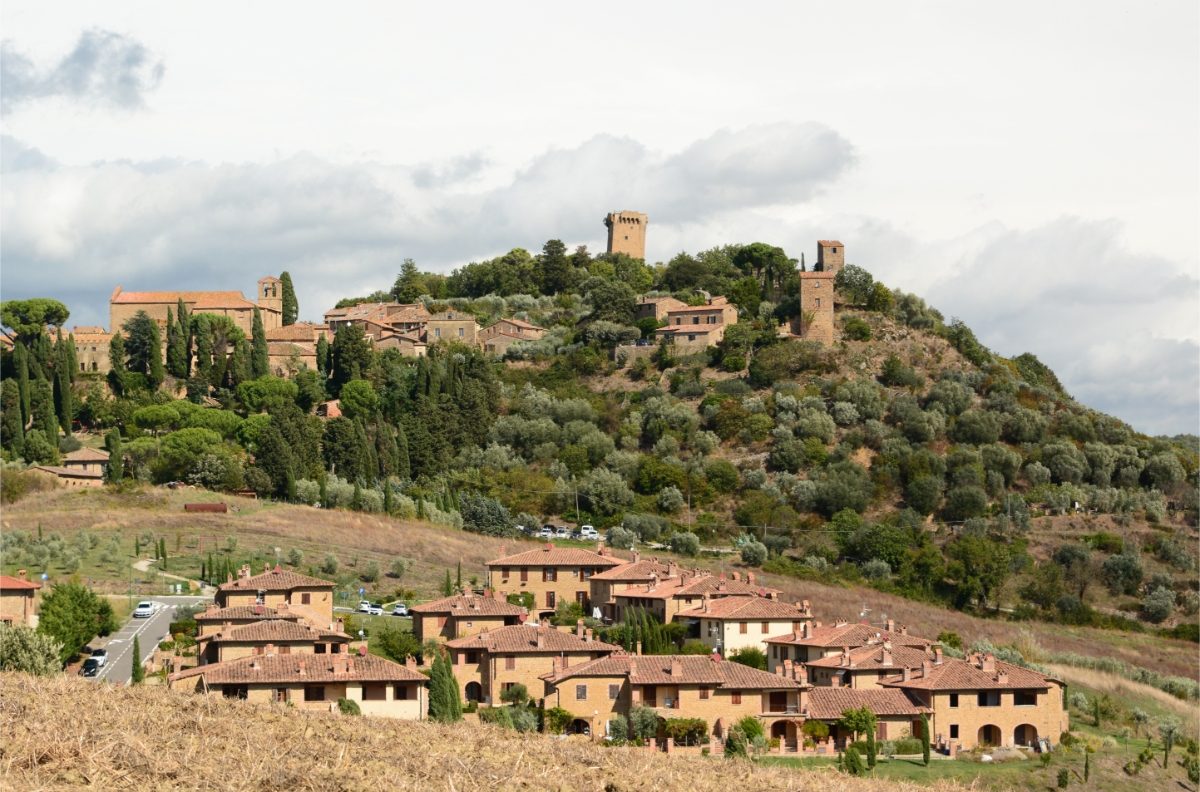
Tuscany’s countryside is a postcard-perfect paradise. The Val d’Orcia, with its gentle hills and cypress-lined roads, looks like it’s straight out of a Renaissance painting. Olive groves and vineyards stretch as far as the eye can see, creating a patchwork of greens and golds.
For a wilder experience, head to the Maremma. This less-visited area boasts rugged coastlines, pine forests, and hot springs. It’s a great spot for hiking and spotting wildlife.
Don’t miss the chance to watch the sunset over the Tuscan hills. The light turns everything golden, a magical moment you’ll never forget.
Tuscan Cities and Towns

Siena steals hearts with its shell-shaped main square and twice-yearly Palio horse race. Wander its narrow streets and pop into a cafe for a slice of panforte, a good local Christmas cake year-round.
Lucca charms visitors with its intact Renaissance walls. You can bike or walk atop them for great views. The town is also known for its 100 churches and delicious olive oil.
San Gimignano, dubbed the “Manhattan of Tuscany,” is famous for its medieval towers. Climb one for sweeping views of the countryside. Don’t leave without trying the local white wine, Vernaccia.
Volterra is an Etruscan gem perched on a hilltop. It’s less crowded than other towns and known for its alabaster crafts. The Piazza dei Priori is one of Italy’s most beautiful medieval squares.
Wine and Cuisine
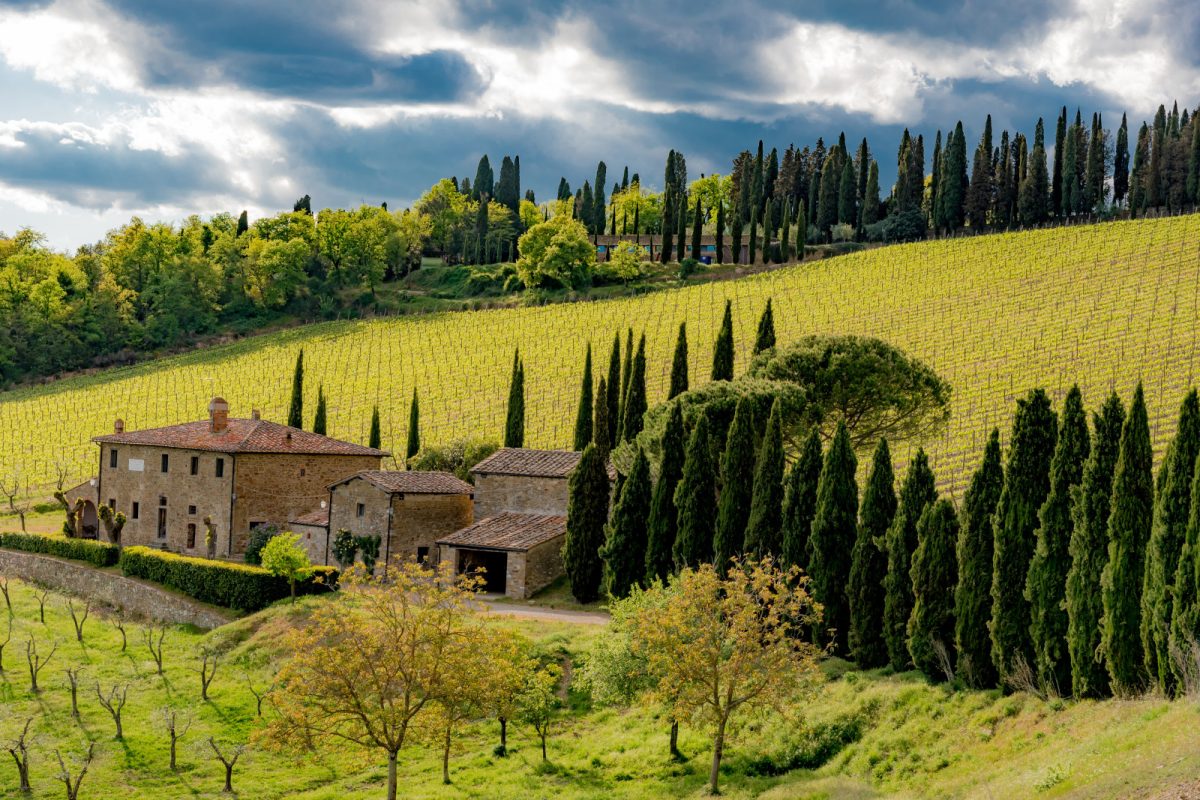
Chianti is synonymous with Tuscan wine. Visit a vineyard for a tasting of Chianti Classico, paired with local pecorino cheese. Many wineries offer tours where you can learn about the wine-making process.
Tuscan cuisine is all about simple, high-quality ingredients. Visit a local market to see the bounty of fresh produce, cured meats, and cheeses. Try pici, a thick hand-rolled pasta with wild boar ragu.
Don’t miss bistecca alla fiorentina, a massive T-bone steak grilled over wood. It’s pricey (about €50-60 per kilo) but worth the splurge. Pair it with a robust red wine for the full experience.
See Related: Wine Lover’s Dream: Rustic Villas in Chianti’s Vineyards
Discovering Florence

Florence captivates visitors with its rich artistic legacy, stunning architecture, and vibrant local culture. This Tuscan gem offers a perfect blend of history and modern Italian life.
Artistic Heritage
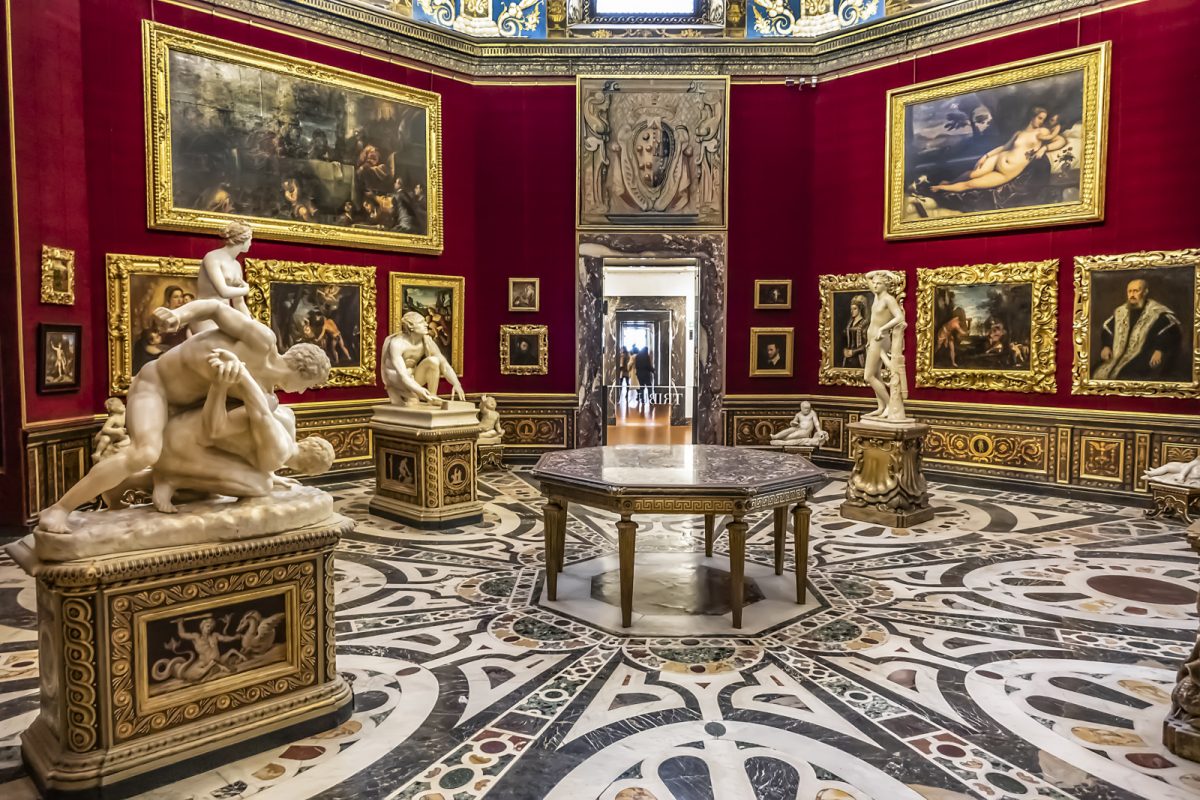
Florence’s museums house some of the world’s most famous Renaissance masterpieces. The Uffizi Gallery is a must-see, with works by Botticelli, Leonardo da Vinci, and Michelangelo. Art lovers shouldn’t miss the Accademia Gallery, home to Michelangelo’s David.
For a unique experience, visitors can book a private tour of the Vasari Corridor. This secret passageway connects the Uffizi to the Pitti Palace. It costs about €45 per person and offers a glimpse into the Medici family’s private art collection.
Spring and fall are ideal times to explore Florence’s art scene. The crowds are smaller, and the weather is pleasant for walking between museums.
Florence’s Architecture
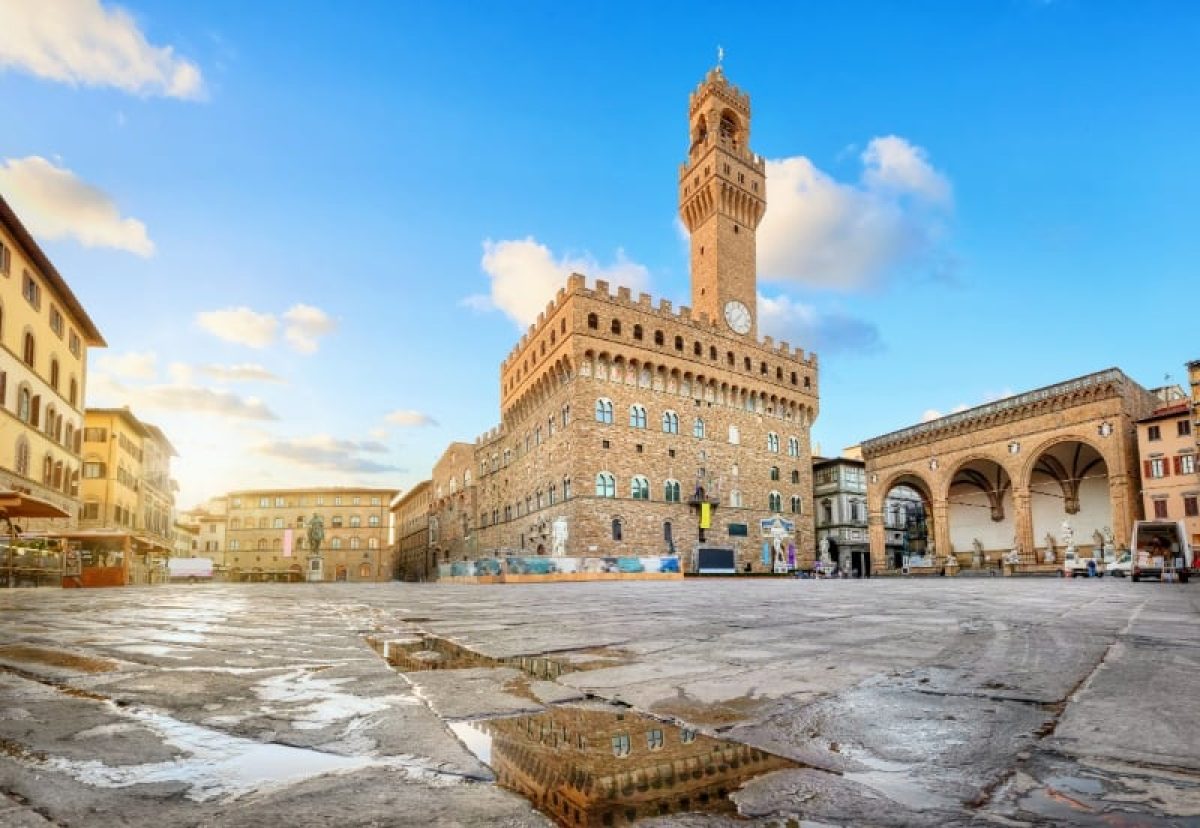
The magnificent Duomo dominates the city’s skyline. Brunelleschi’s dome is an engineering marvel that visitors can climb to enjoy breathtaking views. Tickets cost around €20.
Ponte Vecchio, the city’s oldest bridge, is lined with jewelry shops. It’s a great spot for sunset photos over the Arno River.
Florence’s palaces, like Palazzo Vecchio and Palazzo Pitti, showcase Renaissance architecture at its finest. Many offer guided tours that bring history to life.
Living Like a Local
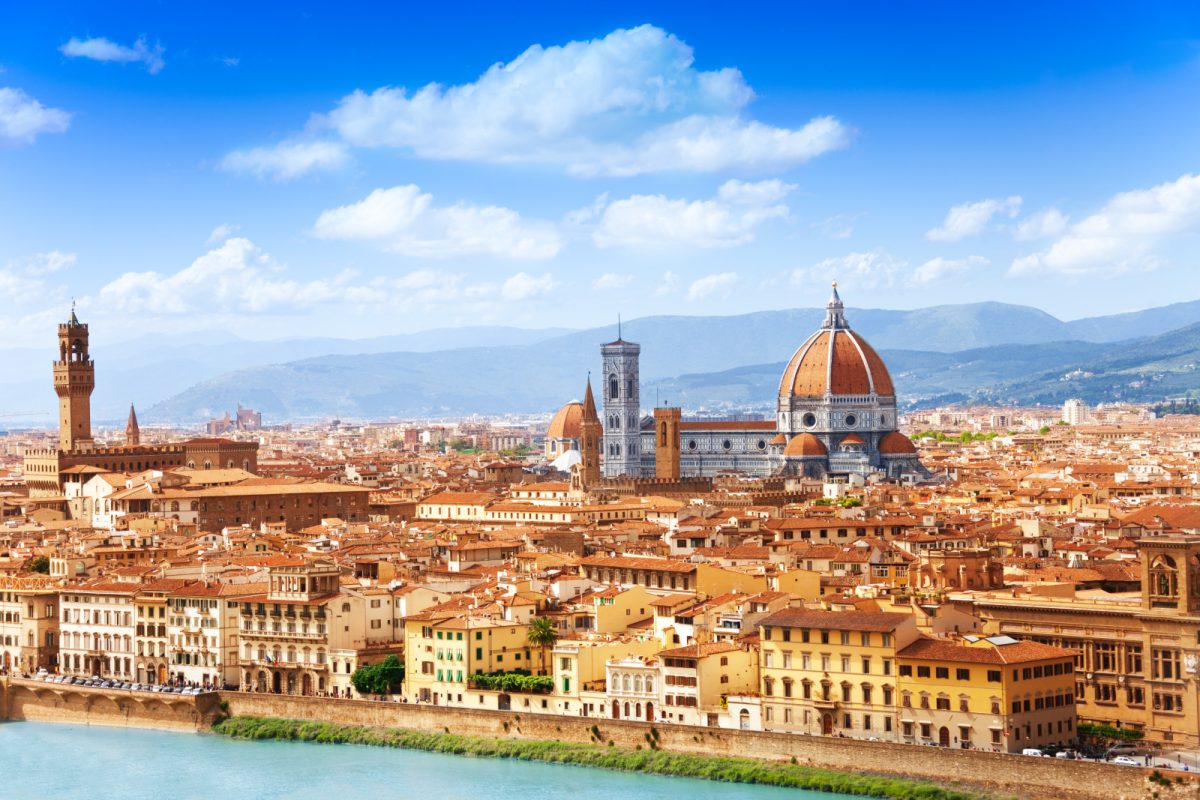
To truly experience Florence, visitors should venture beyond the tourist hotspots. The San Lorenzo market is perfect for sampling local cheeses, wines, and olive oils.
Foodies can join a cooking class to make pasta from scratch. Prices start at about €70 per person.
For a taste of local nightlife, head to Santo Spirito Square. It’s buzzing with bars and cafes where Florentines gather for aperitivo.
Day trips to nearby Tuscan towns like Siena or San Gimignano are easy by bus or train. They offer a chance to see the region’s rolling hills and medieval villages.
Tuscany vs Florence: Day Trips and Itineraries
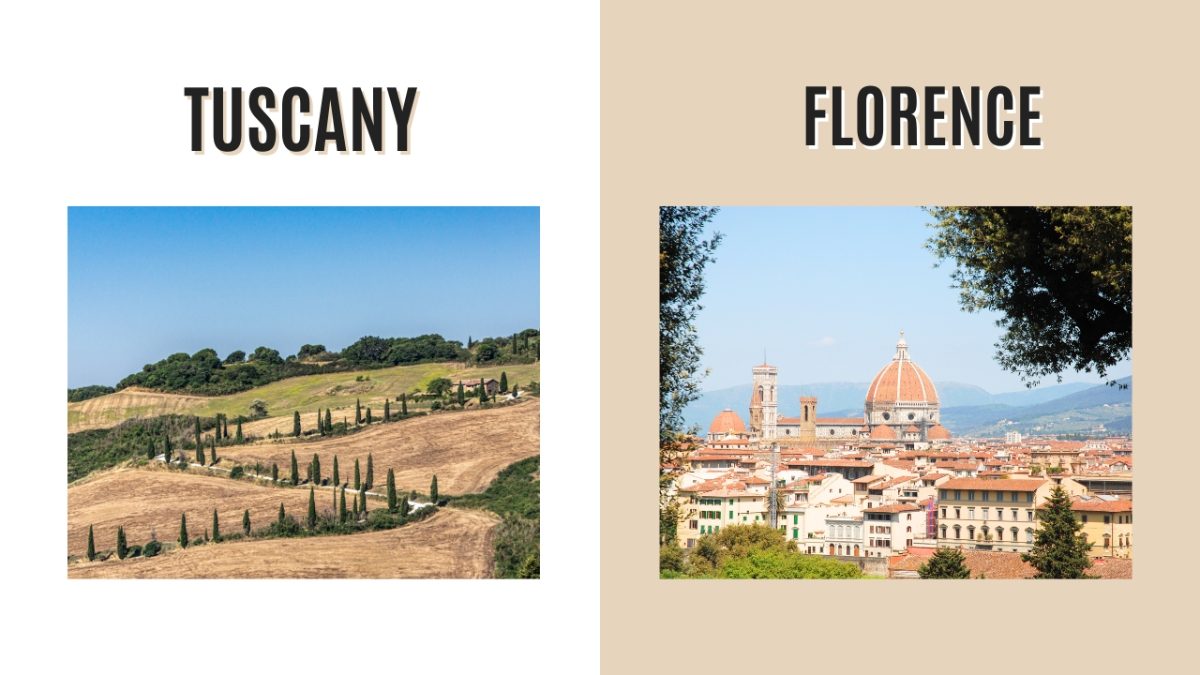
Florence and Tuscany offer amazing day trip options for travelers. From historic towns to wine regions, there’s something for everyone. Let’s explore some top destinations and experiences.
Day Trip Destinations
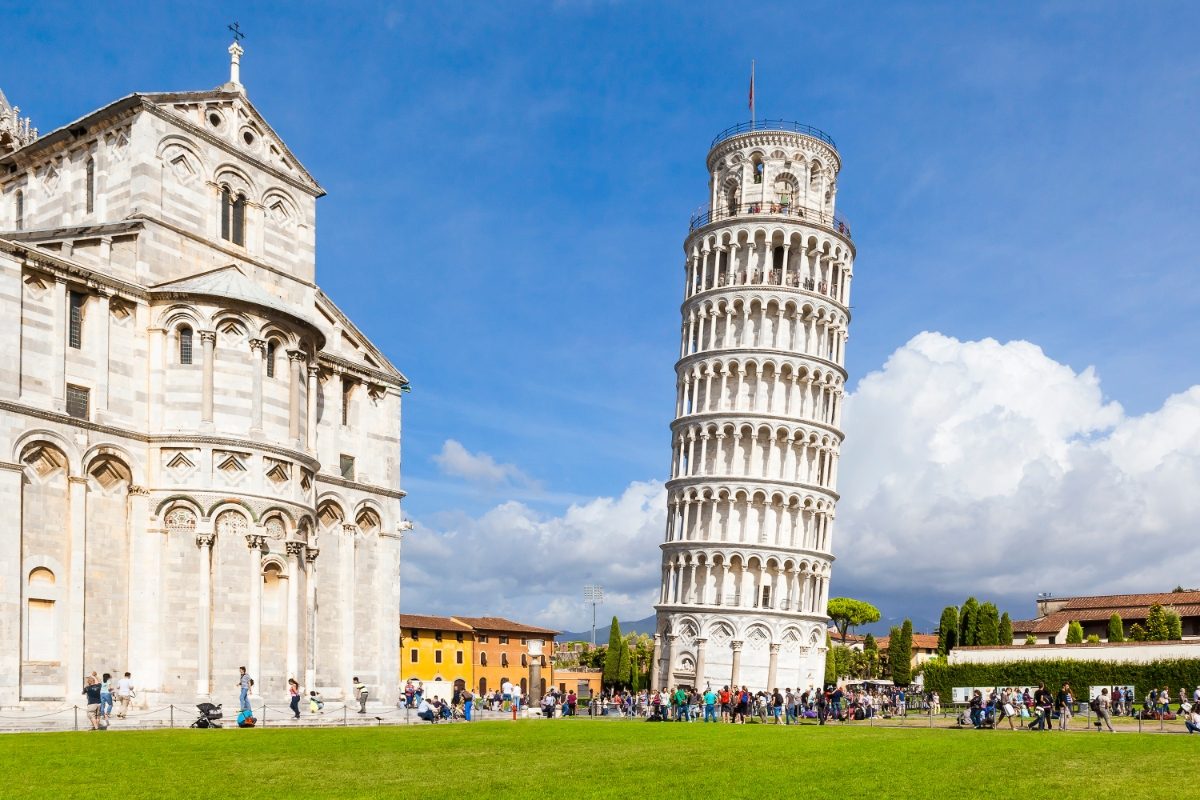
San Gimignano is a must-see medieval hilltop town. Its famous towers create a stunning skyline.
Visitors can climb the Torre Grossa for panoramic views. The town’s gelato shops are world-renowned – try the saffron flavor!
Siena charms with its Gothic architecture and famous Piazza del Campo. Visit in July or August for the thrilling Palio horse race. The Duomo’s intricate marble floor is a masterpiece.
Pisa isn’t just about the Leaning Tower. The whole Piazza dei Miracoli is breathtaking.
Go early to beat the crowds. For €18, you can climb the tower – book ahead!
Lucca’s Renaissance walls are perfect for a bike ride. Rent one for €3/hour and pedal around the 4km circuit. The charming old town has hidden piazzas and towers to discover.
Tuscan Tour Experiences

Wine lovers shouldn’t miss a Chianti tour. Many include vineyard visits, tastings, and a rustic lunch.
Expect to pay €60-100 for a small group tour. Spring and fall offer the best weather and fewer crowds.
For a slice of rural life, try an agriturismo experience. These working farms offer accommodations and home-cooked meals.
You can learn to make pasta or join the olive harvest. Prices vary, but budget €80-150 per night.
Private tours let you customize your Tuscan adventure. A driver can take you to off-the-beaten-path villages like Volterra or Monteriggioni. It’s pricier (€300-500/day) but worth it for flexibility and insider knowledge.
Fiesole makes an easy half-day trip from Florence. Just 20 minutes by bus (€1.50 one-way), it offers Etruscan ruins and sweeping city views. Pack a picnic and watch the sunset over Florence’s skyline.
See Related: Exploring Italy: A Comprehensive 3-Week Itinerary on a Budget
Transportation and Travel Tips

Getting around Tuscany and Florence takes some planning. The region offers various transport options to suit different travel styles and budgets. Staying connected is also key for navigating and enjoying your Italian adventure.
Getting Around Tuscany
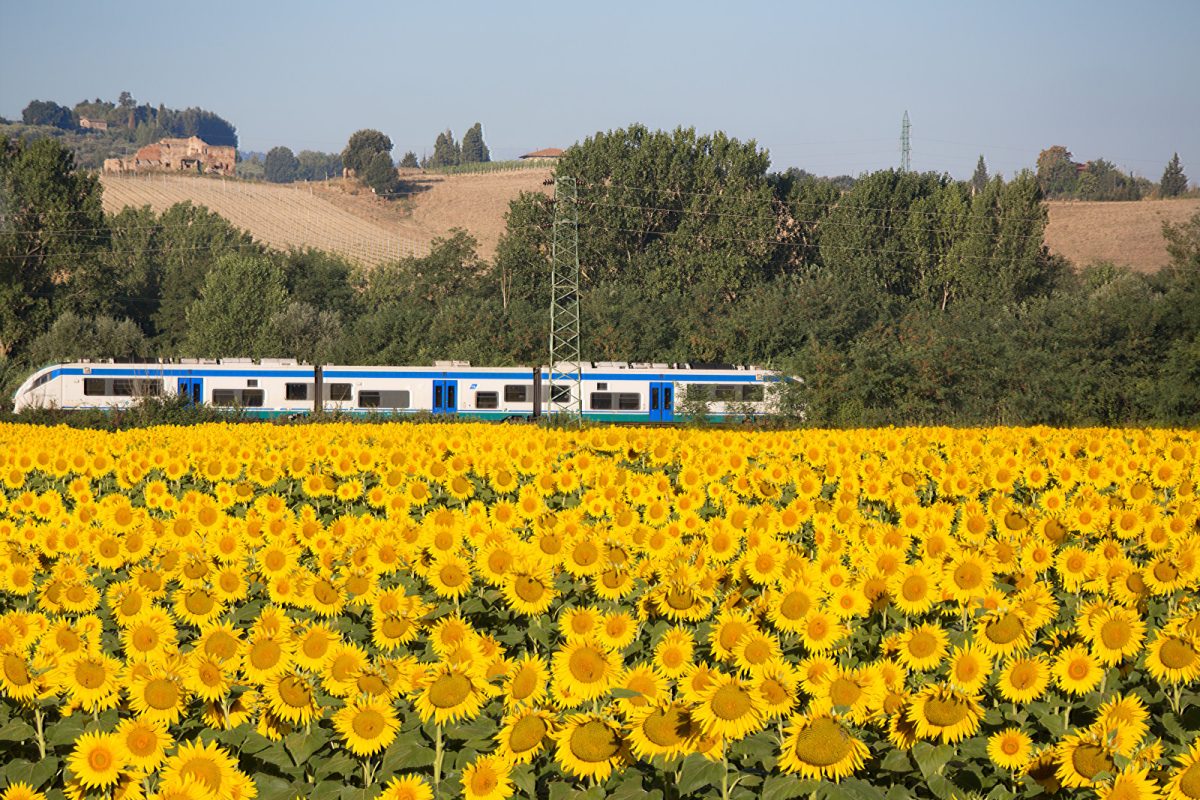
Renting a car frees you to explore Tuscany’s rolling hills and charming villages. Prices start at around €40 per day. Watch out for ZTLs (limited traffic zones) in historic town centers – hefty fines await if you enter without permission!
For a stress-free option, hop on the train. Florence to Siena takes about 90 minutes and costs €10-15. Buses are cheaper but slower. They’re great for reaching hilltop towns trains don’t serve.
Group day tours are popular, too. Expect to pay €60-100 for a full-day trip to Tuscan highlights like San Gimignano and Chianti wineries. You’ll get transport, a guide, and often lunch included.
Staying Connected

Wi-Fi is widely available in Tuscany but not always reliable in rural areas. Most hotels, cafes, and restaurants in towns and cities offer free Wi-Fi.
Buy a local SIM card for mobile data. TIM, Vodafone, and Wind are major providers. A typical tourist package with calls and 10-20 GB of data costs €20-30 monthly.
Offline maps are a lifesaver in Tuscany’s countryside. Download Google Maps or Maps.me before your trip. They work without data and can navigate you through winding country roads.
See Related: Where to Stay in Italy with Kids: Top Family-Friendly Destinations for Unforgettable Memories
Frequently Asked Questions

Planning a trip to Tuscany and Florence can be exciting but also overwhelming. Let’s explore some common questions to help you make the most of your Italian adventure.
What are the must-see attractions when visiting Tuscany and Florence?
Florence’s Uffizi Gallery is a treasure trove of Renaissance art. The Duomo, with its iconic dome, offers breathtaking city views. In Tuscany, don’t miss Siena’s medieval charm and the leaning tower of Pisa.
How can one travel between Florence and other towns in Tuscany?
Trains connect Florence to many Tuscan towns. They’re comfy and run often. For more freedom, rent a car to explore the countryside. Buses are cheaper but take longer.
What are the recommended accommodations for a memorable stay in Florence?
Florence has great places to stay for all budgets. Fancy hotels near the Ponte Vecchio offer luxury, while cozy B&Bs in the Oltrarno area give a local feel. Book a hotel in Italy to find the perfect spot.
Are there unique experiences in Tuscany that shouldn’t be missed?
Wine tasting in Chianti is a must. Try a cooking class to learn Tuscan recipes. Hot air balloon rides over the rolling hills are unforgettable. Truffle hunting with experts is fun and tasty.
What is the best way to explore the Tuscan countryside from Florence?
Rent a Vespa for a fun day trip. Join a small group tour to visit hidden villages. Bike tours through vineyards are popular. Some folks like horseback riding for a unique view.
How much time should you allocate to adequately experience Florence and the wider region of Tuscany?
A week is good for seeing Florence and some of Tuscany. Spend 3-4 days in Florence to see the main sights. Use the rest to explore Tuscan towns and countryside. Two weeks is better if you want a relaxed pace.

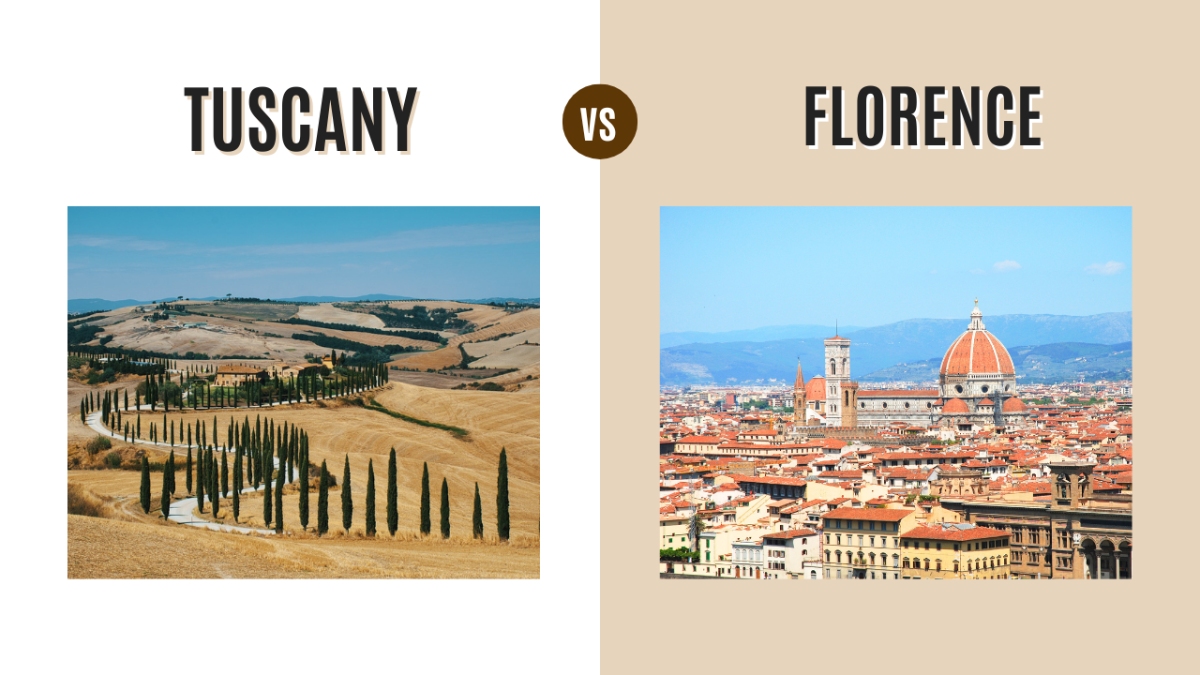
0 Comment